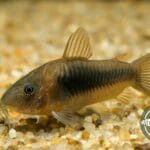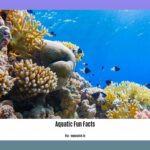Welcome to the fascinating world of Corydoras Hastatus, the adorable dwarf corydoras that have stolen the hearts of fish enthusiasts. These tiny wonders are known for their peaceful nature and striking tail-spot. In this guide, we’ll share all the secrets to keeping these miniature marvels happy and healthy in your aquarium. From picking the right-sized tank to choosing the best tank mates and feeding them right, we’ve got you covered. Get ready to dive into the enchanting underwater realm of Corydoras Hastatus and learn everything you need to know about their care and companionship.
Corydoras Hastatus: An Overview
Choosing the right fish to add to your aquarium can be super exciting, and if you’re looking for a tiny but mighty fish with tons of personality, you might fall in love with Corydoras Hastatus! Also known as the Tail Spot Pygmy Corydoras, they’re like tiny tuxedo-clad rockstars of the dwarf catfish world.
These little guys are absolutely adorable, maxing out at about an inch and a half long. You can spot them by their signature black and white tail marking – like a tiny tuxedo tail! Native to the Amazon and Paraguay River basins in South America, they’re adaptable and relatively easy to care for in a home aquarium.
Recreating Their Natural Habitat
Creating a comfortable environment for your Corydoras Hastatus involves mimicking their natural habitat. In the wild, they love hanging out on sandy bottoms, sifting through the sand for tasty snacks. Therefore, a sandy substrate in your tank isn’t just aesthetically pleasing; it’s essential for their well-being!
These catfish are naturally a little shy. Providing plenty of hiding spots is crucial. Caves, driftwood, and even leafy plants can create a comforting underwater jungle gym for them to explore.
Maintaining the correct water parameters is vital for their health. Aim for a temperature between 72-79°F, a pH of 6.0-7.5, and hardness (the mineral content) between 5-15 dGH.
Feeding Your Fin-tastic Friends
Corydoras Hastatus are the ultimate foodies and aren’t picky eaters! As omnivores, they relish a diverse diet. High-quality sinking pellets make a great base, and you can supplement their diet with frozen or live foods like bloodworms, brine shrimp, or daphnia. It’s like offering them a delicious buffet!
Like us, they enjoy the occasional treat. You can offer blanched veggies, such as zucchini or spinach, in moderation. Feed them once or twice a day, ensuring they consume everything within a few minutes to maintain water quality.
Choosing Compatible Tank Mates
One of the best things about Corydoras Hastatus is their incredibly peaceful nature. They thrive in the company of other peaceful and similarly sized fish. Good tank mates include tetras, rasboras, small danios, or even peaceful loaches.
Avoid introducing large, aggressive fish into their tank. Remember, these little guys are tiny and could easily be mistaken for a snack!
Breeding Corydoras Hastatus
Believe it or not, breeding these captivating creatures in a home aquarium is possible. While not overly complicated, successful breeding requires a bit of finesse. Sometimes, a simple water change with cooler, softer water can be enough to trigger spawning behavior.
The female will lay tiny, adhesive eggs on various surfaces in the tank. Once the babies hatch, caring for the fry involves providing them with infusoria or very fine fry food.
Finding Corydoras Hastatus
Acquiring these delightful fish is quite easy. Most local fish stores and online retailers stock them. They are also affordably priced, generally ranging from $5 to $15 per fish. Factors such as size, age, and unique color variations can influence the price.
The Wonders of Corydoras Hastatus
Beyond their charming appearance, Corydoras Hastatus possess some fascinating characteristics. For example, their sense of touch is highly developed, aided by their barbels – the whisker-like appendages near their mouths. These barbels, packed with taste buds, help them locate food in the sand, much like cats use their whiskers to navigate.
Despite their popularity in the aquarium hobby, there is still much we don’t know about these captivating creatures. How exactly do their barbels work? How do they communicate? These are questions scientists are still trying to answer. By observing your Corydoras Hastatus and learning all you can, you contribute to our understanding of these intriguing aquatic animals!
This guide has provided a solid foundation for caring for Corydoras Hastatus. With proper care, these remarkable creatures will bring joy to your aquarium for years to come!
Cracking the Code: Hastatus vs. Pygmy Corydoras
Identifying the difference between Hastatus and Pygmy Corydoras can be tricky, as they often get mixed up! Although they might appear similar at first glance, a closer look reveals some telltale differences.
One of the most obvious clues lies in their tail fins. The Hastatus Corydoras sports a bold, dark spot at the base of its tail, like a miniature shield. In contrast, the Pygmy Corydoras boasts a clear tail fin.
Another key difference is their swimming style. While both species are bottom dwellers, the Pygmy Corydoras often hovers in mid-water, resembling a tiny hummingbird. This behavior is less common in the more grounded Hastatus Corydoras.
However, there’s ongoing debate among enthusiasts about the consistency of these differences. Some believe that variations in coloration and behavior could be influenced by factors like diet, environment, or even individual personality!
Here’s a quick comparison to help you remember:
| Feature | Hastatus Corydoras | Pygmy Corydoras |
|---|---|---|
| Tail Spot | Present, dark and distinct | Absent |
| Swimming Style | Primarily along the bottom | Often hovers in mid-water |
Whether you’re a seasoned aquarist or just starting, distinguishing between these two species is essential, especially when creating a diverse community tank. Both the Hastatus and Pygmy Corydoras, with their playful behavior and peaceful nature, will bring joy to any aquarium.
Understanding Corydoras Hastatus Size
Corydoras Hastatus, affectionately known as Dwarf Corydoras or Tail Spot Corydoras, are admired for their petite size, making them perfect for nano tanks and smaller aquariums. These peaceful bottom dwellers typically reach a maximum length of 1.4 inches (3.5 cm), ranking them among the smallest in the Corydoras genus.
While “Hastatus Corydoras size” might sound impressive, these cuties rarely grow larger than a thumbnail! This makes them an ideal choice for smaller aquariums or bustling community tanks.
An intriguing aspect of Hastatus Corydoras is the size difference between males and females. While exact measurements are hard to come by, males are generally smaller than females. This subtle dimorphism adds another layer of intrigue for aquarists.
Often confused with their close relative, the Corydoras Pygmaeus, Hastatus Corydoras can pose a challenge for accurate identification. Hastatus Corydoras are slightly larger than Pygmaeus Corydoras, making clear visual distinctions important for hobbyists.
Here’s a simple breakdown of their size:
- Maximum Size: 1.4 inches (3.5 cm)
- Males Smaller: Noticeably smaller than females.
- Growth Rate: Varies depending on factors like diet, water conditions, and tank size.
To ensure your Corydoras Hastatus thrive, consider these care requirements:
- Tank Size: A minimum of 10 gallons is recommended for a small group. This ensures they have enough space to swim and explore freely.
- Water Parameters:
- pH: 6.0-8.0
- Hardness: 2-25 dGH
- Temperature: 22-26°C (72-79°F)
Curious about other Corydoras species? Check out our comprehensive guide on Corydoras Cory Catfish to learn more about their care and unique personalities.
Habrosus Corydoras Size: Another Tiny Wonder
Habrosus Corydoras, also known as Salt-and-Pepper Corydoras, are another popular dwarf Corydoras species. While they are considered the largest of the “dwarf corydoras,” don’t worry – they are still remarkably small!
Female Habrosus Corydoras tend to be slightly larger, reaching up to 1.5 inches long (3.8 cm) with rounder bellies. Males are typically smaller and slimmer than their female counterparts.
Here’s what you need to know about their size:
- Maximum Size: 1.5 inches for females, with males being slightly smaller.
- Context: This makes them the largest of the “dwarf corydoras,” a group that includes Corydoras pygmaeus and Corydoras hastatus.
- Sexual Dimorphism: Females are rounder-bellied and larger than the slimmer males.
People’s Statement: “Corydoras habrosus is the largest of the three species of “dwarf corydoras,” with the round-bellied females reaching 1.5 inches (3.5 cm) and males being slightly smaller and slimmer.” – Aquarium Co-Op
Despite their small size, Habrosus Corydoras are energetic and social creatures, requiring a minimum tank size of 10 gallons for a thriving group.
Remember, when it comes to choosing the right Corydoras species for your aquarium, size is just one factor to consider. Research their specific care requirements, temperament, and compatibility with other fish to ensure you create a harmonious and thriving aquatic environment.
- Discover Trasa Robertson Cobern’s Mentors: Shaping Her Hurst Campaign - July 9, 2025
- Discover People Influenced by Trasa Cobern: A Legacy of Service - July 9, 2025
- Discover Trasa Cobern’s Nonprofit Impact: A Deep Dive - July 7, 2025















